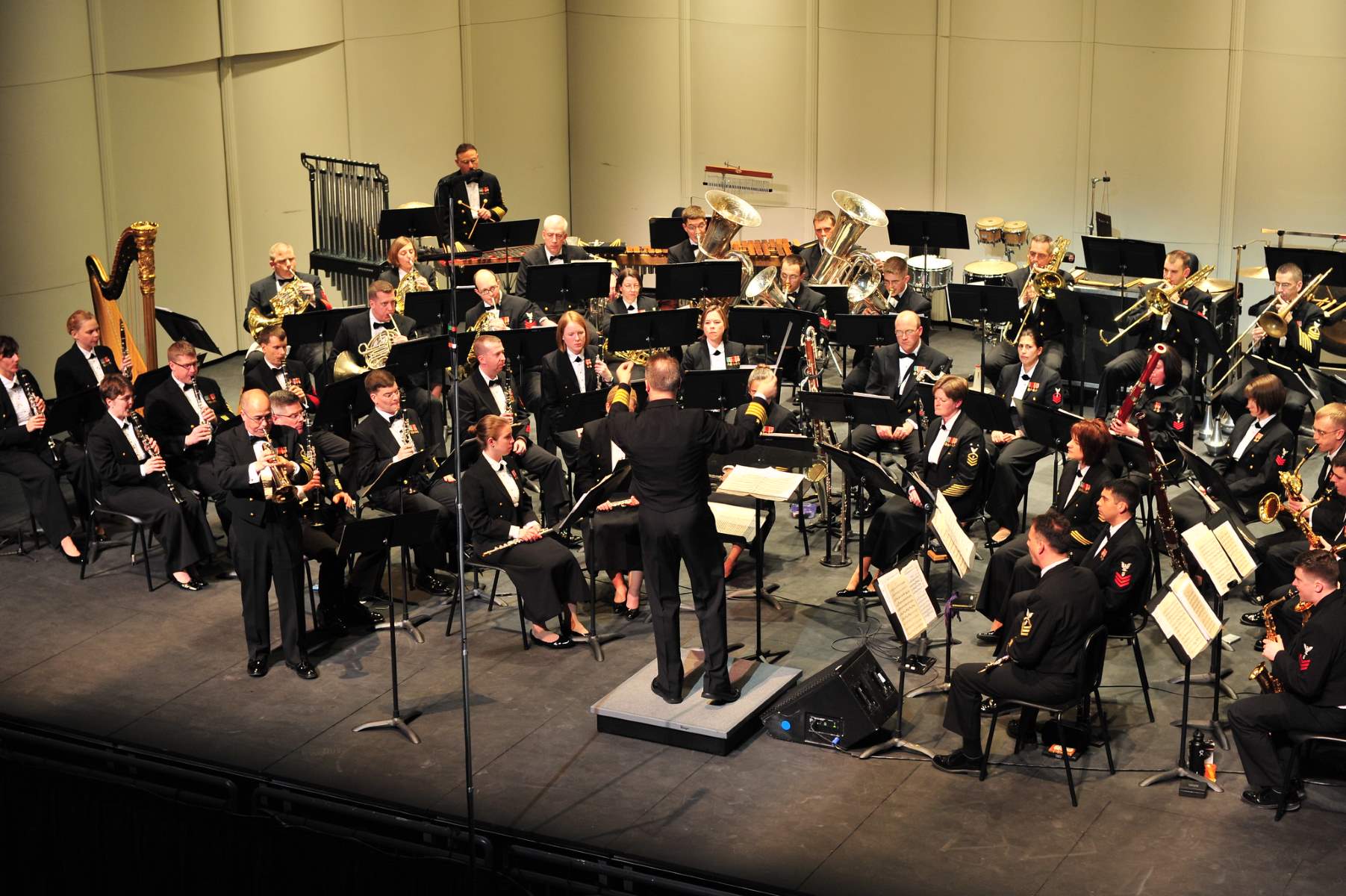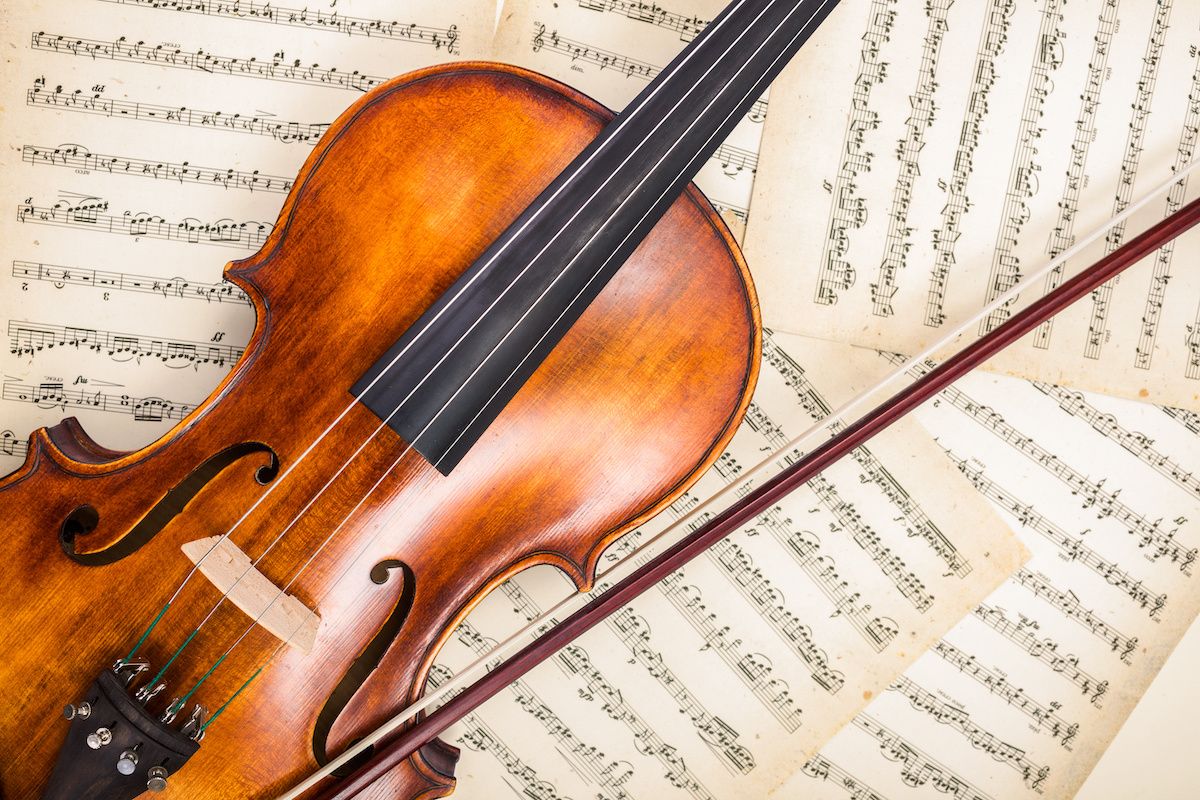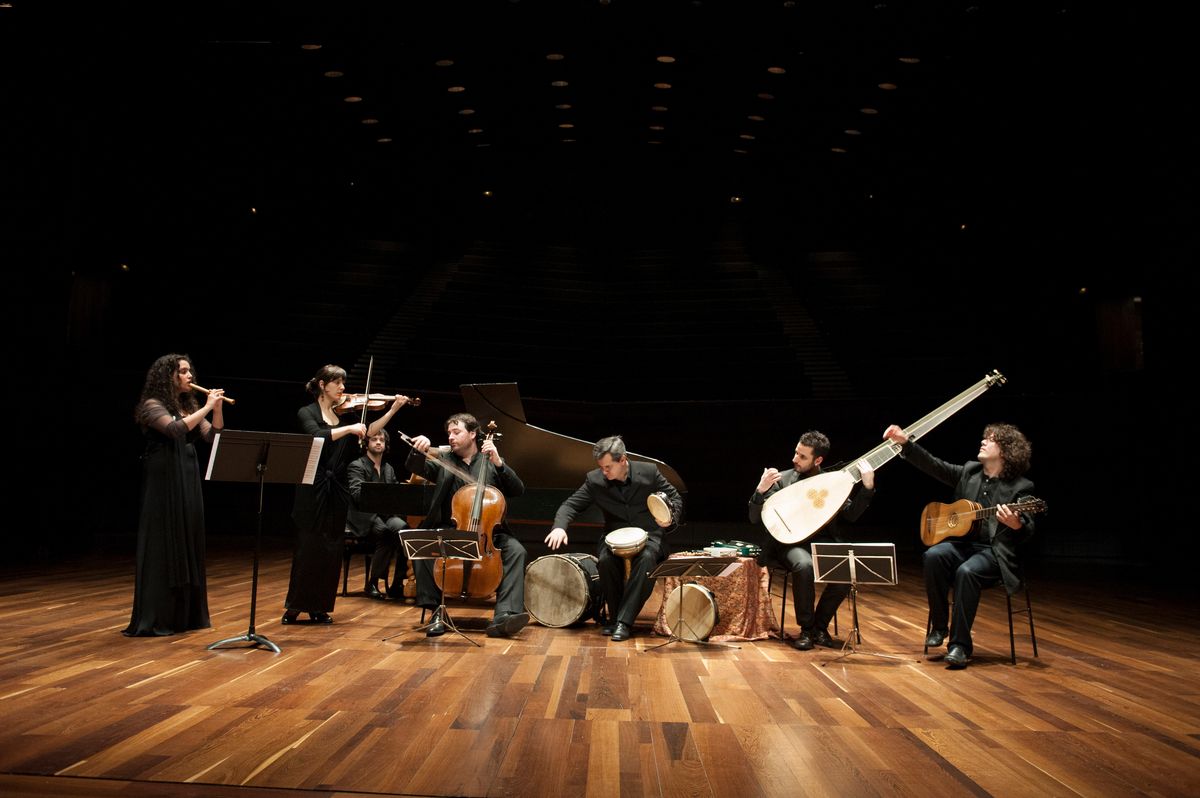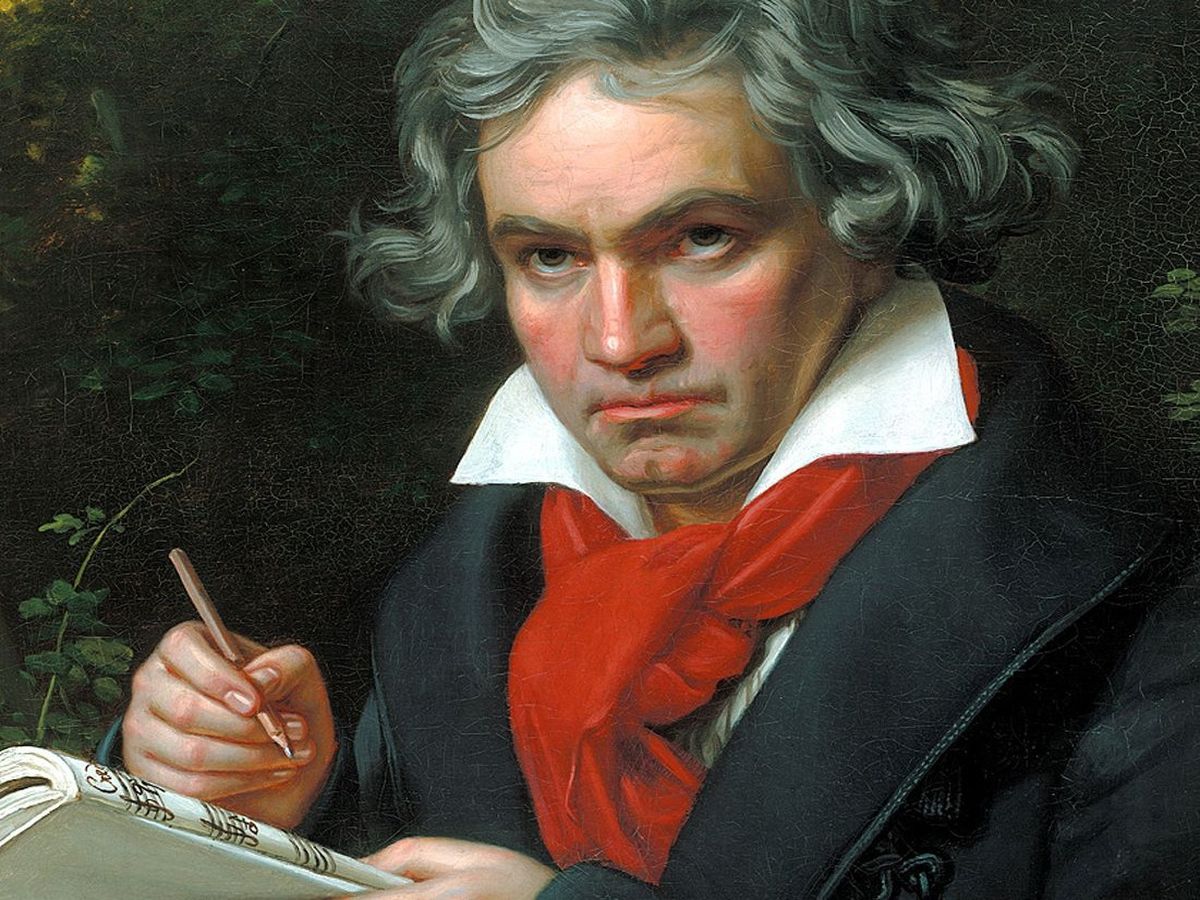Home>Genres>Classical>How Does The Music Of The Classical Period Differ From The Music Of The Baroque Period?
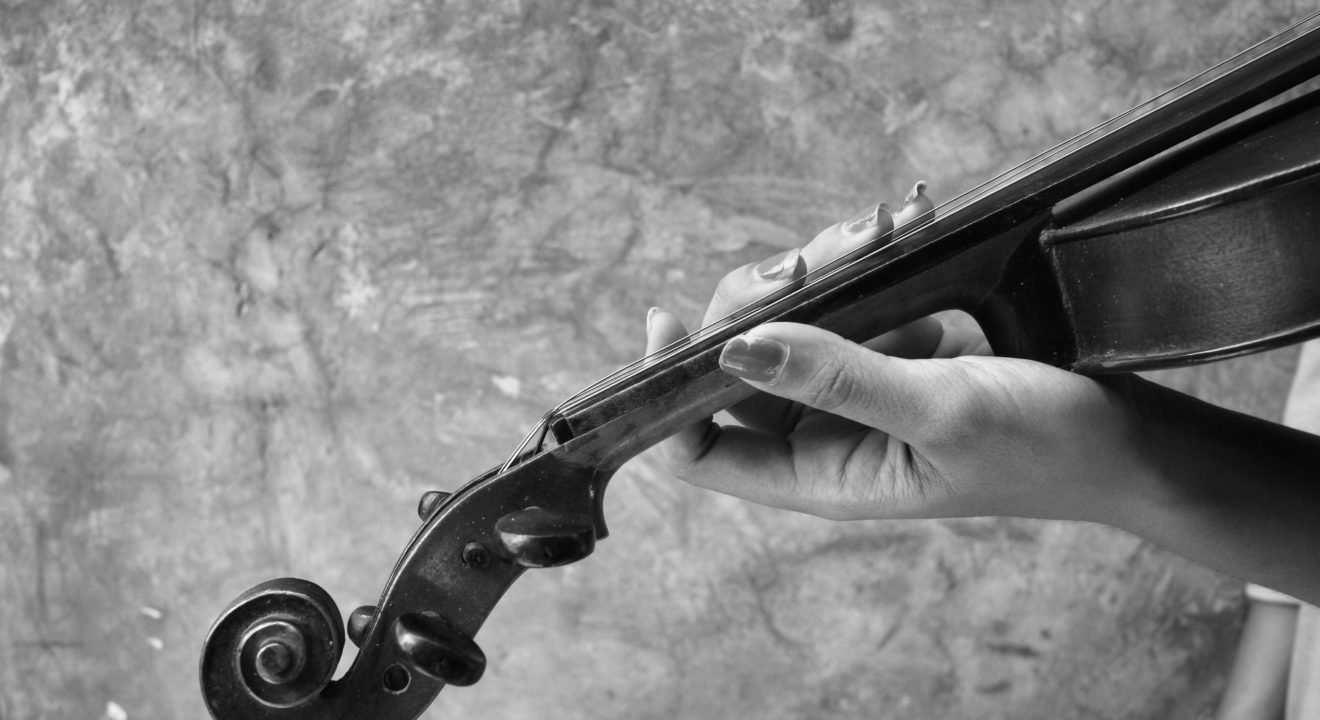

Classical
How Does The Music Of The Classical Period Differ From The Music Of The Baroque Period?
Modified: January 22, 2024
Discover the differences between the music of the Classical and Baroque periods. Explore the unique characteristics of Classical music and its contrast to the Baroque era.
(Many of the links in this article redirect to a specific reviewed product. Your purchase of these products through affiliate links helps to generate commission for AudioLover.com, at no extra cost. Learn more)
Table of Contents
- Introduction
- Definition of the Classical Period
- Definition of the Baroque Period
- Characteristics of the Baroque Period
- Characteristics of the Classical Period
- Differences in Musical Forms
- Differences in Melodic Style
- Differences in Harmonic Language
- Differences in Instrumentation
- Similarities Between the Baroque and Classical Periods
- Conclusion
Introduction
Music has been a universal language throughout history, serving as a reflection of cultural, social, and artistic developments. Two significant periods in the history of Western classical music are the Baroque and Classical periods. While both periods share a rich heritage and feature prominent composers, there are distinct differences that set them apart.
The Baroque period, spanning roughly from the early 17th century to the mid-18th century, was characterized by ornate and elaborate musical compositions. It was a time of great expression, where composers aimed to create emotional impact through intricate melodies and complex harmonies. On the other hand, the Classical period, which followed the Baroque period and lasted from the mid-18th century to the early 19th century, embraced a more balanced and restrained style.
Within this article, we will explore the differences between the music of the Classical and Baroque periods, covering aspects such as musical forms, melodic style, harmonic language, and instrumentation. By examining these elements, we can gain a deeper understanding of the significant shifts and innovations that marked the transition from the Baroque to the Classical era in music history.
Definition of the Classical Period
The Classical period, also known as the era of Viennese Classicism, encompasses music composed from the mid-18th century to the early 19th century. This period followed the Baroque period and preceded the Romantic period. It was a time of elegance, balance, and refinement in music.
The Classical period is often associated with composers such as Wolfgang Amadeus Mozart, Joseph Haydn, and Ludwig van Beethoven. These composers contributed greatly to the development of the symphony, sonata, concerto, and other musical forms that became hallmarks of the period.
One defining characteristic of the Classical period is its emphasis on clarity and structure. Composers during this time sought to create compositions that were precise and well-organized. They focused on creating balanced phrases and motifs that were easily recognizable and memorable to listeners.
In terms of instrumentation, the Classical period saw the rise of the modern orchestra, consisting of string sections, woodwinds, brass, and percussion. This allowed composers to explore a wider range of musical textures and dynamics. The symphony, in particular, became a prominent form, typically consisting of four movements that showcased various tempos and moods.
The Classical period also marked a shift in musical patronage. While in the Baroque period, composers often served under the employment of nobility and the church, the rise of the middle class in society allowed for a broader audience for music. Composers began to find success by writing music for public concerts and selling their compositions to private individuals.
Overall, the Classical period represented a move towards a more balanced and refined musical style. It placed a greater emphasis on melody, clarity, and structure while showcasing the talents of composers who would go on to be regarded as some of the greatest in history.
Definition of the Baroque Period
The Baroque period, spanning roughly from the early 17th century to the mid-18th century, was a time of dramatic and ornate artistic expression across various fields, including music, architecture, and visual arts. In the realm of music, the Baroque period witnessed a flourishing of intricate compositions with elaborate ornamentation.
One defining characteristic of the Baroque period is its grandeur and extravagance. Composers during this time, such as Johann Sebastian Bach and George Frideric Handel, sought to create emotionally powerful music by employing complex harmonies, rich textures, and intricate melodies. They often utilized ornate ornamentation, such as trills, runs, and embellishments, to add depth and complexity to their compositions.
Another hallmark of the Baroque period is the concept of basso continuo, also known as figured bass. This technique involved a bass line accompanied by a harmony instrument, typically a harpsichord or an organ, which improvised chords based on the given bass notes. It provided a foundation for the music and allowed for greater flexibility and creativity in performance.
The Baroque period also witnessed the development of various musical forms, including the fugue, concerto grosso, and opera. Fugues, characterized by their intricate counterpoint and strict adherence to thematic development, exemplify the compositional complexity of the period. Concerto grosso, in which a small group of soloists played in dialogue with the orchestra, showcased the virtuosity of the performers. Operas, with their combination of music, drama, and visual spectacle, became a popular form of entertainment.
In terms of instrumentation, the Baroque period saw the emergence of new instruments and the expansion of the orchestra. Strings, particularly the violin, played a significant role in Baroque music, along with woodwinds, brass, and percussion instruments. Composers explored the capabilities of these instruments to create intricate and expressive music.
Overall, the Baroque period was a time of grandeur, complexity, and emotional intensity in music. It laid the foundation for future musical developments and showcased the mastery of composers who pushed the boundaries of artistic expression.
Characteristics of the Baroque Period
The Baroque period, spanning from the early 17th century to the mid-18th century, is characterized by its distinct musical style and artistic approach. During this time, composers pushed the limits of musical expression, resulting in several characteristic features that are synonymous with the Baroque period.
One prominent characteristic of Baroque music is its use of elaborate and ornate ornamentation. Composers such as Johann Sebastian Bach and Antonio Vivaldi employed techniques like trills, turns, and mordents to embellish melodies and add richness and complexity to their compositions. This ornamentation not only enhanced the beauty of the music but also showcased the technical prowess of performers.
Another significant characteristic of Baroque music is its preference for polyphony and contrapuntal writing. Polyphony refers to the simultaneous combination of multiple independent melodic lines, creating intricate and interweaving musical textures. Composers during the Baroque period, like Bach, mastered the art of counterpoint, carefully crafting melodic lines that complemented and harmonically interacted with one another.
The use of basso continuo, also known as figured bass, is a defining feature of the Baroque period. Basso continuo consists of a bass part accompanied by a harmony instrument, often a harpsichord or organ, which improvises chords based on the given bass notes. This technique provided a harmonic foundation for the music and enabled flexibility in the interpretation and performance of the compositions.
Rhythmically, Baroque music is characterized by its syncopation and rhythmic drive. Composers used rhythmic patterns, such as the dotted rhythms, to create a sense of energy and forward momentum in their music. This rhythmic drive helped to engage the listener and heighten the emotional impact of the compositions.
Furthermore, the Baroque period saw the development of several distinctive musical forms, such as the fugue, concerto, and suite. Fugues, characterized by their use of imitative polyphony and strict thematic development, were a popular form of composition during this time. Concertos, featuring the dialogue between a soloist or group of soloists and the orchestra, highlighted virtuosic playing and showcased the talent of performers.
Finally, Baroque music often incorporated the concept of terraced dynamics. Rather than gradual changes in volume, dynamics in Baroque compositions shifted abruptly between loud and soft levels. This use of terraced dynamics created contrast and added a dramatic effect to the music.
Overall, the Baroque period is characterized by its ornate ornamentation, polyphony, use of basso continuo, rhythmic drive, distinctive musical forms, and terraced dynamics. These characteristics combined to create a rich and expressive musical style that continues to captivate listeners to this day.
Characteristics of the Classical Period
The Classical period, spanning from the mid-18th century to the early 19th century, brought a significant shift in musical style and approach compared to the previous Baroque era. The music of the Classical period is characterized by its emphasis on clarity, balance, and restraint, reflecting the ideals of the Enlightenment and the changing societal landscape.
One of the key characteristics of Classical music is its focus on simple and elegant melodies. Composers of the time, such as Wolfgang Amadeus Mozart and Joseph Haydn, crafted memorable and singable melodies that were easy to follow and appreciate. These melodies were often characterized by their clarity, balanced phrases, and symmetrical structures.
Another prominent characteristic of the Classical period is its preference for clear and systematic musical forms. Composers embraced standardized forms such as sonata, symphony, and concerto, which provided a balanced and well-structured framework for their compositions. These forms typically consisted of distinct sections with clear themes and development, creating a sense of coherence and order.
In terms of harmony, the Classical period displayed a move towards simplified and more transparent harmonic language. Composers utilized diatonic harmonies, predominantly major and minor scales, to create harmonic progressions that were predictable yet pleasing to the ear. This departure from the intricate and complex harmonies of the Baroque period contributed to the overall sense of clarity and elegance.
Instrumentation also underwent significant changes during the Classical period. The rise of the classical orchestra saw a refinement in the distribution of instruments, resulting in a balanced and unified sound. String sections, woodwinds, brass, and percussion instruments formed the core of the orchestra, allowing composers to explore a wider range of timbres and dynamics.
Additionally, the Classical period marked a shift in the role of the composer. Composers were no longer dependant on the patronage of the nobility or the church but found success by catering to a growing middle-class audience. This change in patronage led to a greater focus on accessibility and entertainment value in musical compositions.
Despite these distinctive characteristics, it is important to note that the Classical period was not devoid of emotion. While the emotional expression in Classical music may be more contained compared to the intense sentiment of the Baroque period, composers still conveyed a wide range of emotions within the constraints of elegance and balance.
In summary, the Classical period is characterized by its emphasis on clarity, balance, simplicity, and structured musical forms. These characteristics reflect the changing social and cultural landscape of the time, showcasing the emergence of a more refined and accessible musical style that continues to captivate audiences today.
Differences in Musical Forms
The musical forms of the Baroque and Classical periods differ in structure, complexity, and expressive intent. While the Baroque period showcased elaborate and intricate forms, the Classical period embraced simpler and more balanced structures.
In the Baroque period, one of the most prominent forms was the fugue. The fugue was a highly complex and contrapuntal composition, characterized by its use of imitative polyphony and strict thematic development. It involved the interweaving of multiple melodic lines that interacted with one another in a deliberate and intricate manner.
On the other hand, the Classical period saw the emergence of standardized musical forms such as the sonata, symphony, and concerto. These forms followed a more balanced and predictable structure, typically consisting of distinct sections with clear themes and development. Composers of the Classical period, like Mozart and Haydn, adhered to these established forms while incorporating their own creative ideas and innovations.
Another significant difference in musical forms between the two periods is the use of basso continuo. In the Baroque period, basso continuo was a prevalent feature, providing a harmonic foundation for the music. It involved a bass line accompanied by a harmony instrument, typically a harpsichord or organ, which improvised chords based on the given bass notes. This technique allowed for flexibility and creativity in performance.
In contrast, the Classical period moved away from the basso continuo tradition. Composers of this era favored a more defined and detailed notation, specifying the chords and harmonies explicitly in the sheet music. This shift provided a greater level of control and clarity in the performance, aligning with the Classical period’s emphasis on precision and structure.
Moreover, the symphony is a significant musical form that flourished during the Classical period. Composers like Mozart and Haydn elevated the symphony to new heights, expanding its structure to include four movements – an energetic opening (allegro), a slower and more lyrical second movement (adagio), a contrasting third movement (menuetto or scherzo), and a vibrant and lively finale (allegro).
In summary, the Baroque period embraced complex and intricate musical forms like the fugue, while the Classical period saw the rise of standardized forms such as the sonata, symphony, and concerto. The Classical period favored balance, structured development, and explicit notation, moving away from the improvisational and contrapuntal nature of the Baroque period.
Differences in Melodic Style
The melodic style of music in the Baroque and Classical periods varies in terms of complexity, ornamentation, and emotional expression. While the Baroque period featured elaborate and ornamented melodies, the Classical period embraced simpler yet elegant and singable melodies.
In the Baroque period, composers like Bach and Handel sought to create emotionally powerful music through the use of complex melodic lines. Melodies in Baroque music often featured intricate ornamentation, such as trills, turns, and mordents, which added richness and embellishment. These ornamentations not only showcased the technical prowess of the performers but also created a sense of drama and virtuosity.
In contrast, the melodic style of the Classical period was characterized by simplicity, clarity, and balance. Composers of this era, including Mozart and Haydn, crafted melodies that were memorable, singable, and easy to follow. Classical melodies were often characterized by their balanced phrases, symmetrical structures, and clear-cut contours. Their straightforward nature allowed for a stronger connection between the listener and the music.
While the Baroque period embraced highly embellished melodies, the Classical period focused on elegance and emotional restraint. Classical melodies were not as ornate or elaborate as their Baroque counterparts. Instead, they relied on the inherent beauty and natural flow of the melody to evoke emotional responses. The emphasis was on creating melodies that were pleasing to the ear, with a simplicity that allowed for accessibility and widespread popularity.
In terms of expression, the melodic style of the Baroque period often exhibited a wide range of emotions. Baroque melodies had a tendency to fluctuate between moments of intense drama, melancholy, and lively excitement. This emotional variety was achieved through the use of complex harmonies, intricate melodic lines, and dynamic changes.
On the other hand, the melodic style of the Classical period tended to be more restrained and balanced. While there were still opportunities for expressive and emotive melodies, Classical composers focused on creating a sense of emotional equilibrium within their compositions. Melodies in the Classical period carried a sense of gracefulness and refinement, reflecting the ideals of the Enlightenment and the desire for order and clarity.
In summary, the melodic styles of the Baroque and Classical periods differ in terms of complexity, ornamentation, and emotional expression. Baroque melodies are characterized by their intricate ornamentation and dramatic expression, while Classical melodies emphasize simplicity, elegance, and emotional restraint. Understanding these differences helps us appreciate the unique artistic qualities and intentions behind the music of each period.
Differences in Harmonic Language
The harmonic language of music in the Baroque and Classical periods exhibits noticeable differences in terms of complexity, tonality, and harmonic progression. While the Baroque period showcased intricate and often idiosyncratic harmonies, the Classical period embraced a more structured and standardized approach.
In the Baroque period, composers such as Bach and Handel explored complex and adventurous harmonies. Baroque music often featured richly chromatic harmonies and frequent use of dissonance, providing a sense of tension and drama. Composers employed intricate contrapuntal techniques to create elaborate and interwoven harmonic progressions, resulting in a distinctive and highly expressive harmonic language.
Baroque composers also made use of the basso continuo technique, where a continuous bassline accompanied by a harpsichord or organ improvised harmonies based on the given bass notes. This allowed for flexibility and creativity in harmonic embellishment, resulting in a varied and colorful harmonic palette.
On the other hand, the Classical period saw a shift towards a more standardized and predictable harmonic language. Composers of this era, such as Mozart and Haydn, sought clarity and simplicity in their harmonic progressions while maintaining a sense of balance and structure. The harmonies became more diatonic, relying heavily on major and minor scales.
Classical compositions embraced functional harmony, where chords were organized in a hierarchical relationship based on their tonal function. The predominant use of triadic chords, such as the tonic, dominant, and subdominant, created a clear and stable tonal center. Rather than complex chromaticism, Classical composers focused on creating smooth and seamless harmonic progressions that followed traditional tonal principles.
The Classical period also introduced a greater adherence to formal symmetry and balance in harmonic structure. Musical phrases within a composition were often organized in a balanced and symmetrical manner, leading to a sense of coherence and order. This emphasis on structure extended to the use of codas and clear cadences to mark the end of musical sections and provide a sense of resolution.
Overall, the harmonic language of Baroque music was characterized by its complexity, chromaticism, and adventurous use of dissonance. In contrast, the Classical period favored clarity, simplicity, and adherence to functional tonality. Understanding these differences in harmonic language guides us in appreciating the distinct musical styles and artistic intentions of each period.
Differences in Instrumentation
The instrumentation of music in the Baroque and Classical periods demonstrates notable differences in terms of the types of instruments used, the size of ensembles, and the overall sound palette. While the Baroque period featured diverse and varied instrumentation, the Classical period witnessed the development of the modern orchestra and a more standardized ensemble.
In the Baroque period, a wide range of instruments was utilized to create a rich and colorful sound. String instruments, such as the violin, viola, cello, and double bass, formed the foundation of Baroque ensembles. Keyboard instruments like the harpsichord and organ provided harmonic support, while woodwind instruments, including the flute, oboe, and bassoon, added melodic and harmonic textures. Brass instruments, such as the trumpet and French horn, were used for ceremonial and fanfare-like passages, while percussion instruments were employed sparingly and mainly in the context of specific compositions.
Baroque composers made use of basso continuo, consisting of a bass line accompanied by a harpsichord or organ, to provide harmonic support and improvisation. This allowed for flexibility and creative interpretation in performances, contributing to the varied and diverse sound world of the Baroque period.
In contrast, the Classical period saw the rise of the modern orchestra and a more standardized approach to instrumentation. Composers like Mozart and Haydn took advantage of the refined and balanced sound of the classical orchestra, consisting of string sections, woodwinds, brass, and percussion instruments.
String sections remained at the core of the orchestra, with increased emphasis on the violin as the leading instrument. Woodwind sections were expanded to include flutes, oboes, clarinets, and bassoons, while brass sections introduced the use of horns, trumpets, and trombones. The addition of timpani and other percussion instruments brought depth and contrast to compositions when necessary.
The development of the modern orchestra in the Classical period allowed for a wider range of dynamic and expressive possibilities. Composers could explore different timbral combinations, textures, and instrumental interactions, creating a more balanced and unified ensemble sound.
Furthermore, the standardization of instrumentation in the Classical period allowed for a more accessible and consistent performance practice. Composers could rely on a set group of instruments and their specific capabilities, resulting in a more reliable and predictable musical outcome.
Overall, the Baroque period showcased a diverse and varied instrumental palette, employing a wide range of instruments in different combinations. The Classical period, on the other hand, embraced a more standardized instrumentation with the rise of the modern orchestra, allowing for a balanced and refined sound that became a hallmark of the era.
Similarities Between the Baroque and Classical Periods
While the Baroque and Classical periods in music history are distinct with their own unique characteristics, there are several similarities that can be identified between these two periods.
One similarity is the continued use of musical forms that were developed during the Baroque period and carried over into the Classical period. Both periods embraced forms such as the concerto, sonata, and suite, albeit with some stylistic differences. Composers in both periods utilized these established forms as a foundation for their compositions, showcasing their creativity and innovation within these structures.
Another similarity lies in the continued importance of keyboard instruments. The harpsichord, a prominent instrument in the Baroque period, continued to be used during the Classical period. However, it gradually gave way to the piano as technological advancements made it a more versatile and expressive instrument. Composers in both periods composed significant works for keyboard instruments, demonstrating their importance in the musical landscape.
Additionally, both the Baroque and Classical periods saw the emergence of highly influential and revered composers. In the Baroque period, composers like Johann Sebastian Bach, George Frideric Handel, and Antonio Vivaldi left a lasting impact on the musical world with their prolific compositions and technical innovations. Similarly, the Classical period witnessed the rise of composers such as Wolfgang Amadeus Mozart, Joseph Haydn, and Ludwig van Beethoven, who are regarded as some of the most significant figures in music history.
The use of a tonal system is another shared characteristic between the Baroque and Classical periods. Both periods relied on the establishment of tonal centers and the organization of harmonies within a key. Major and minor keys were prevalent, and composers in both periods utilized functional harmony to structure their compositions.
Furthermore, both periods showcased a high level of technical skill and virtuosity in performance. Whether it was the intricate counterpoint of the Baroque period or the precise execution of Classical compositions, musicians in both eras were expected to demonstrate exceptional mastery of their instruments and musical techniques.
Lastly, both the Baroque and Classical periods placed a significant emphasis on the patronage system. Composers of both eras sought the support and sponsorship of noble courts, aristocrats, and wealthy individuals. These patrons provided financial support and resources, enabling composers to focus on their artistic endeavors and produce their celebrated works.
In summary, while the Baroque and Classical periods have distinct features, they also display notable similarities. This includes the use of established musical forms, the significance of keyboard instruments, the presence of revered composers, the utilization of a tonal system, the emphasis on technical skill and virtuosity, and the reliance on patronage for support and recognition. By recognizing these shared characteristics, we gain a deeper appreciation for the interconnectedness and continuity of musical development across these periods.
Conclusion
The Baroque and Classical periods in music history represent significant milestones in the evolution of Western classical music. While each period has its own distinct characteristics and style, they are connected through shared influences and a continuous artistic development.
The Baroque period, with its ornate ornamentation, complex harmonies, and intricate forms, showcased a high level of craftsmanship and emotional intensity. Composers like Bach and Handel pushed the boundaries of musical expression, resulting in iconic works that continue to captivate audiences today.
In contrast, the Classical period embraced simplicity, clarity, and structure. Composers such as Mozart, Haydn, and Beethoven embraced standardized forms, elegant melodies, and balanced harmonies to create music that was accessible and emotionally refined. This period saw the rise of the modern orchestra and a more standardized approach to instrumentation.
Despite their differences, both periods share commonalities. They built upon established musical forms, relied on the skills of virtuosic performers, and saw the emergence of highly influential and revered composers. Both periods utilized a tonal system, albeit in distinct ways, and sought the support of patrons for financial backing and recognition.
Ultimately, the Baroque and Classical periods laid the foundation for future musical developments, paving the way for the Romantic and contemporary eras of music. They continue to be sources of inspiration and influence for composers and musicians today, showcasing the richness and diversity of the classical music tradition.
By appreciating the unique characteristics of each period and understanding their similarities, we gain a deeper insight into the evolution of music and the artistic achievements of composers who have left an indelible mark on the musical landscape.
Whether it is the emotional depth and ornate brilliance of the Baroque period or the elegance and refined beauty of the Classical period, let us celebrate and cherish the timeless masterpieces that have enriched our lives and continue to resonate with us through the ages.

